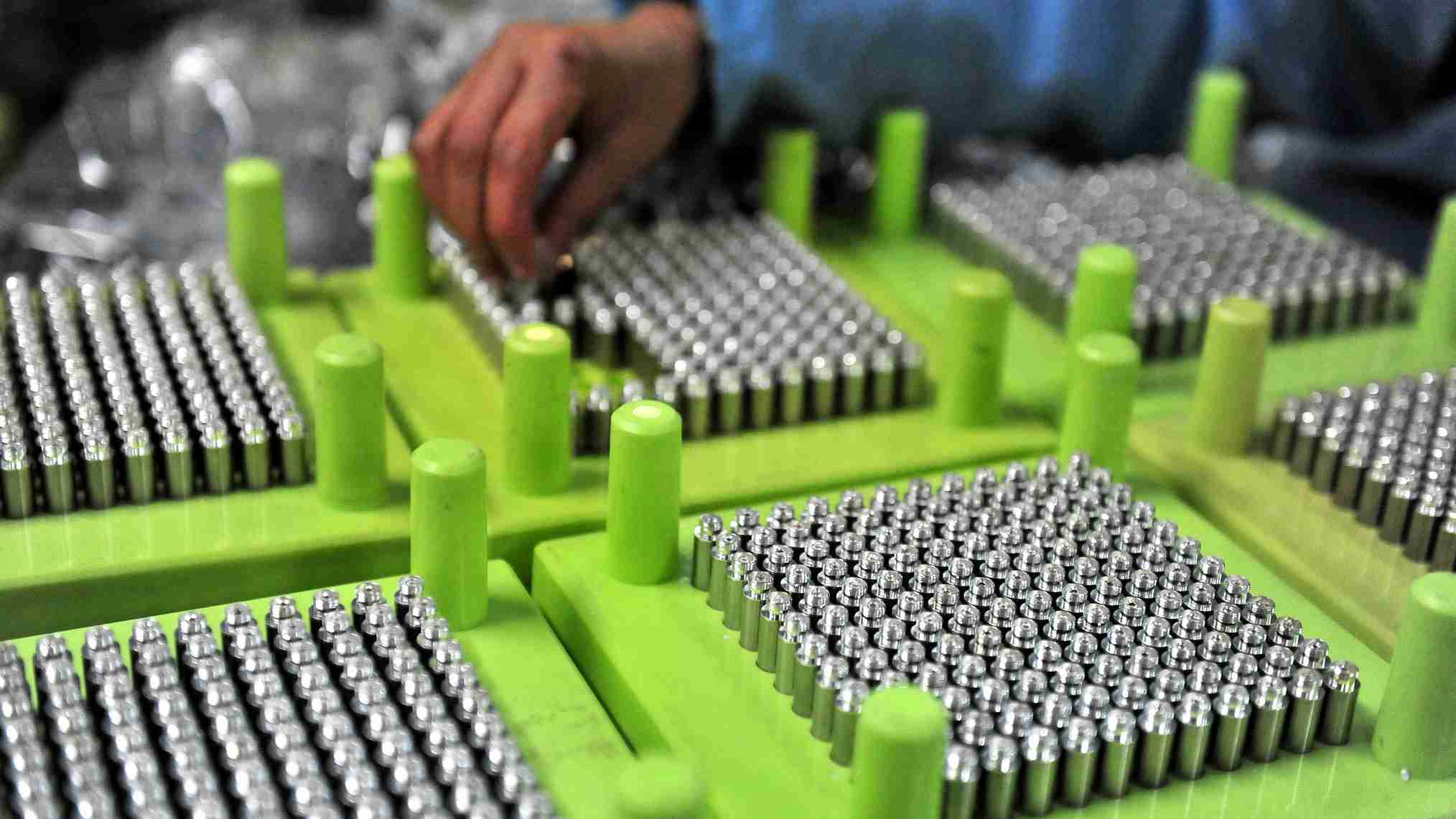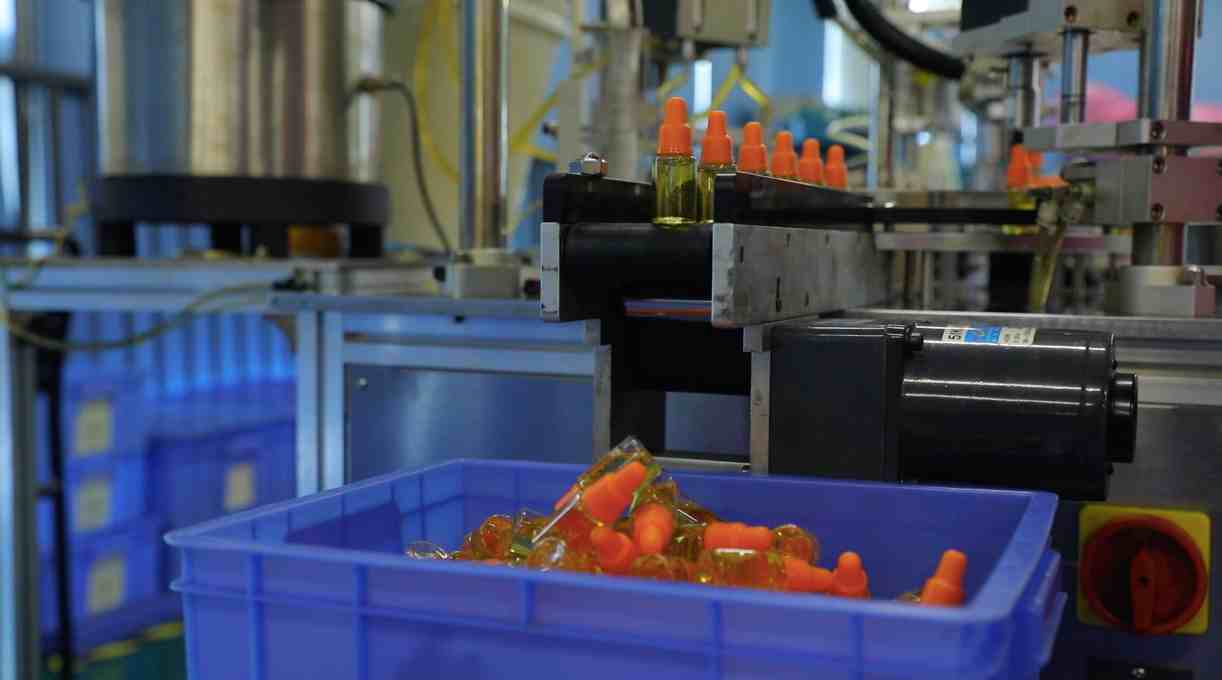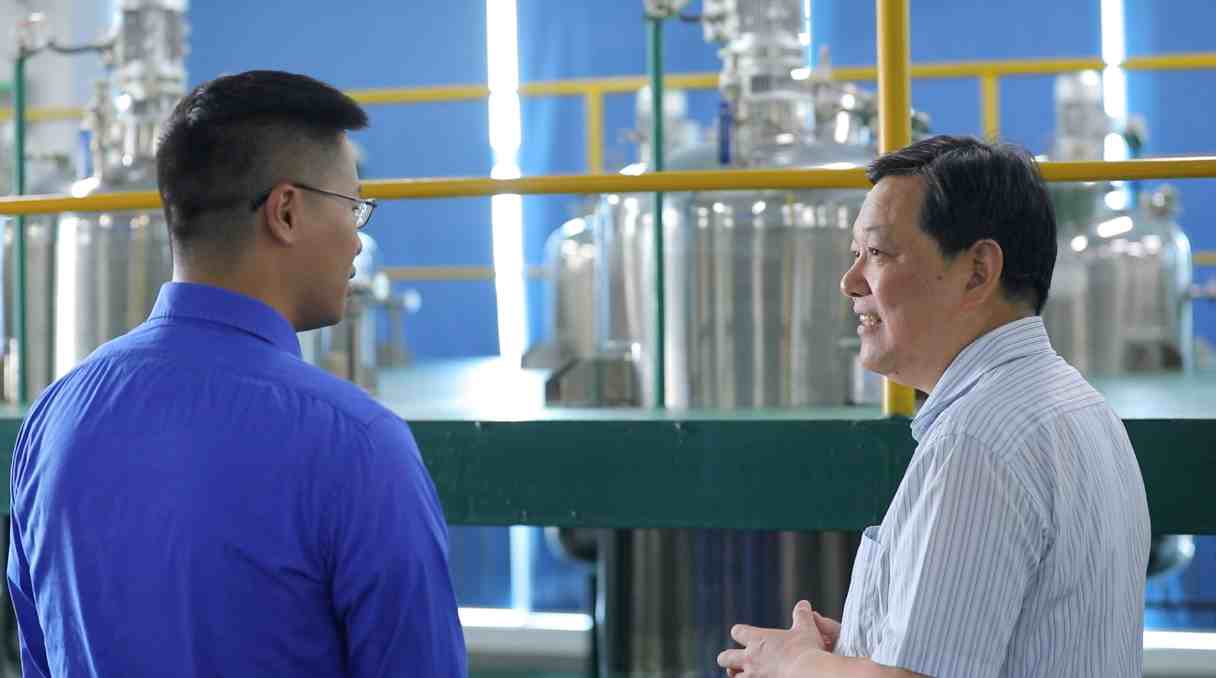
Business
14:27, 11-Aug-2018
US tariffs on e-cigarettes may hurt American consumers
Updated
13:50, 14-Aug-2018
By CGTN’s Cui Hui’ao, Liang Qipeng
02:31

E-cigarettes have been targeted by the Trump administration’s second round of tariffs on Chinese imports, but few people know that the Chinese-made kind is the only market-viable option for tens of thousands of American distributors and sellers.
Hangsen, a company in Shenzhen, southern China’s Guangdong Province, produces raw materials for e-cigarettes. Each day the workshop produces nearly 1 million bottles of the so-called e-liquid, the vast majority of which is exported to countries such as US, UK, and Italy.
“The domestic market accounts for less than 6 percent of our business. The US market accounts for around 40 percent. Our products are very popular abroad.” said Yao Jide, the company’s chairman.

E-liquid produced by Hangsen/CGTN Photo
E-liquid produced by Hangsen/CGTN Photo
Conceived as a way for addicted smokers to wean themselves off “the habit,” e-cigarettes have become increasingly popular with young users across the world, especially in the US.
Yao said an e-cigarette is a complicated device that contains a mouthpiece, a battery, a microprocessor, a heating element, and e-liquid.
Currently, more than 90 percent of the world’s e-cigarettes are made in China. And nearly all of those products are produced in Shenzhen before getting shipped overseas because the city is one of the major economic hubs and manufacturing metropolises in China, home to big names including Huawei and Foxconn, according to Yao.

Yao Jide (right), Chairman of Hangsen and Vice Chairman of the China E-cigarette Association speaks to CGTN. /CGTN Photo
Yao Jide (right), Chairman of Hangsen and Vice Chairman of the China E-cigarette Association speaks to CGTN. /CGTN Photo
Now as the US moves ahead with 25 percent tariffs on 16 billion US dollars worth of Chinese imports, which will go into effect on August 23, e-cigarettes will inevitably be hit by the policy.
But according to Yao, also the Vice Chairman of the China E-cigarette Association, the extra costs will funnel down to American e-cigarette consumers because Chinese products are the only source for American distributors. “They would have no choice but to raise prices for users if tariffs go into effect.”
China’s overwhelming share of global e-cigarette production is supported by its advantages in labor costs, technology and its comprehensive supply chain. “It would take at least three to five years to shift the industry elsewhere.” said Yao.

E-cigarettes displayed in Hangsen/CGTN Photo
E-cigarettes displayed in Hangsen/CGTN Photo
More importantly, Chinese manufacturers are the owners of most intellectual properties in the industry.
In total, Chinese e-cigarettes manufacturers own more than 20,000 intellectual property rights on relevant products.
One anecdote shared by global law firm Dentons’ lawyer Sun Lei is that at the recent hearing on section 301, the US Department of Commerce asked an American distributor if they could force Chinese suppliers to transfer their IP to another country.
“That company says: ‘what are you doing? You are accusing the behavior of China to force the transfer of IP but you are doing this. How can I do that?’ Then, there is silence. There is long-time silence.” said Sun Lei.
In 2017, the US imported 300 million US dollars worth of vaping devices from China – an almost 280 percent increase from the previous year.
The fast-growing market for the product means if this trade war continues, it will hurt consumers and the industry as a whole but Yao said for sure that it would not destroy Chinese manufacturers.

SITEMAP
Copyright © 2018 CGTN. Beijing ICP prepared NO.16065310-3
Copyright © 2018 CGTN. Beijing ICP prepared NO.16065310-3